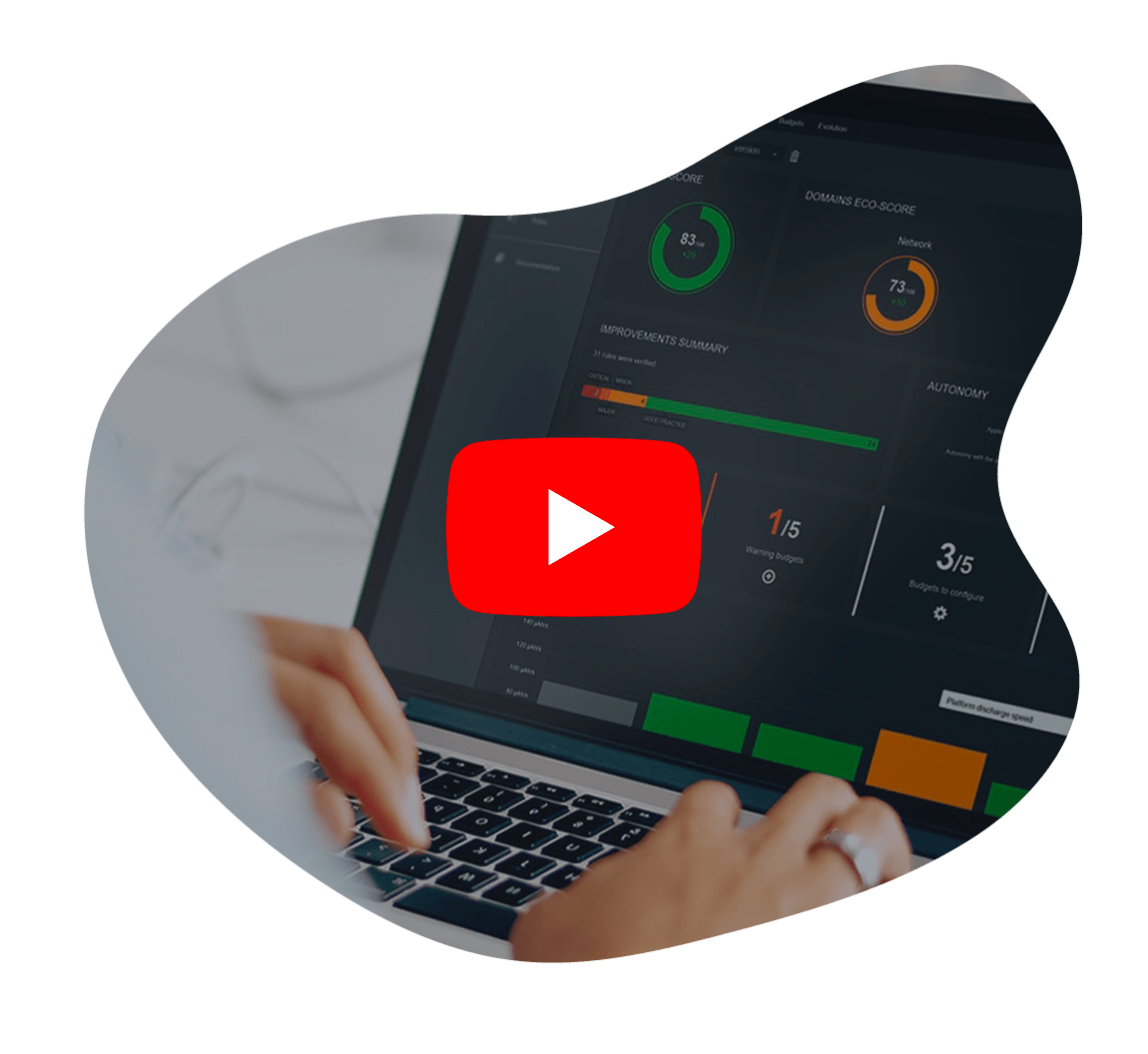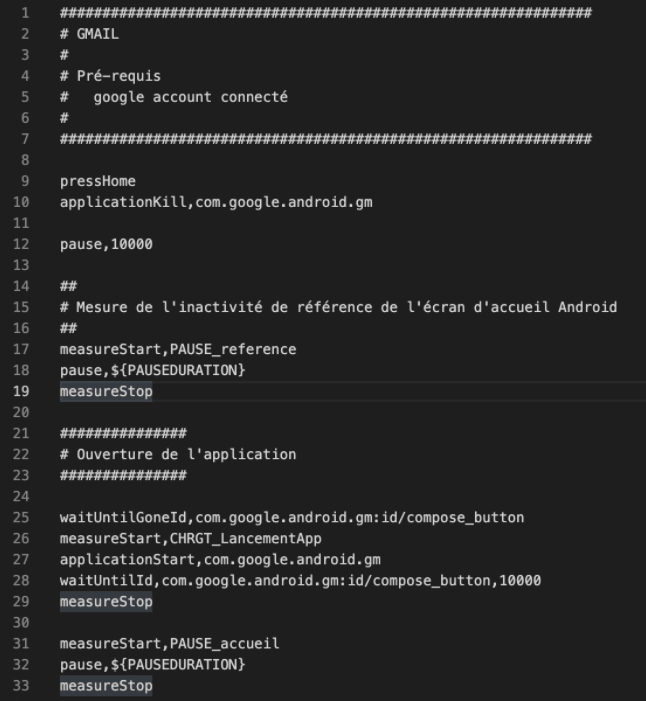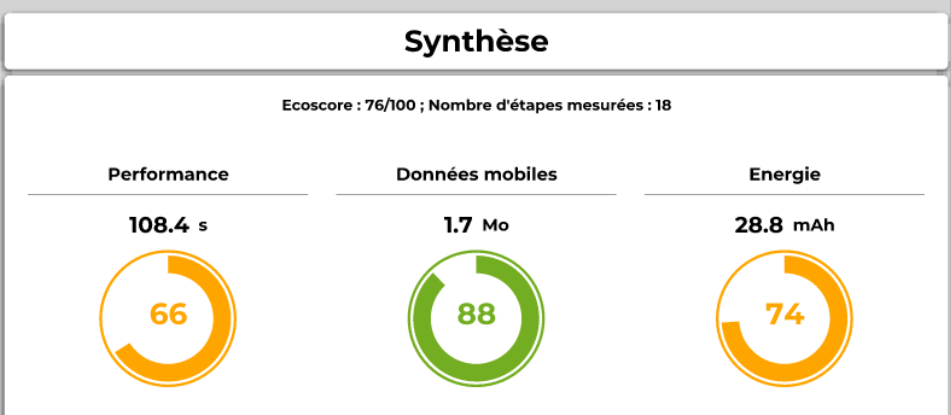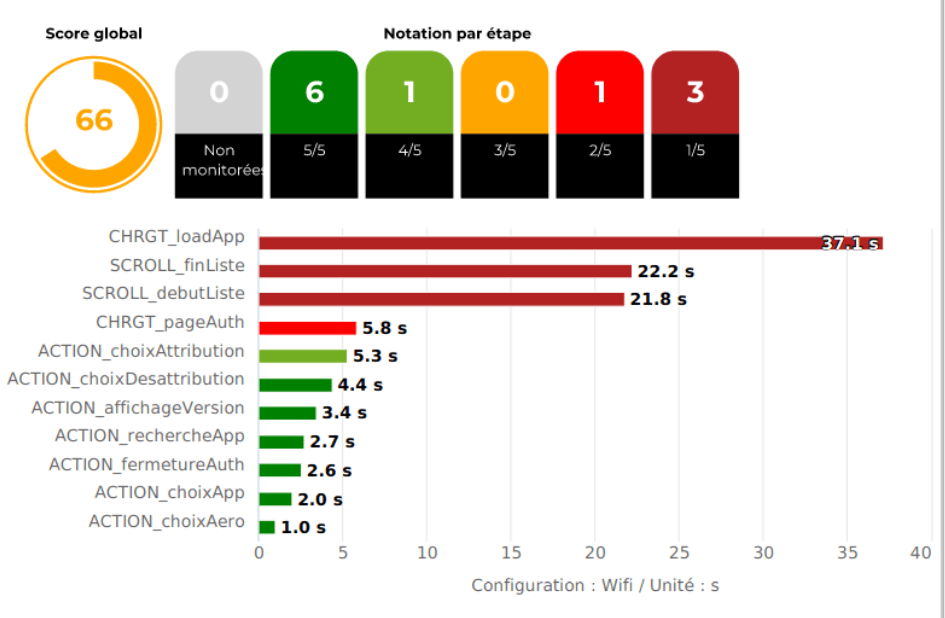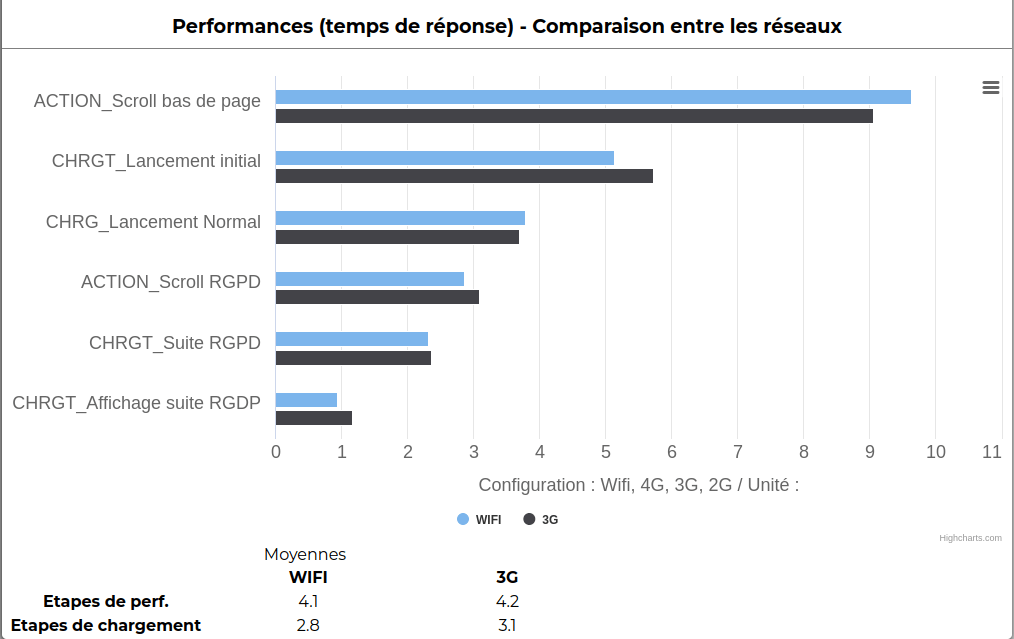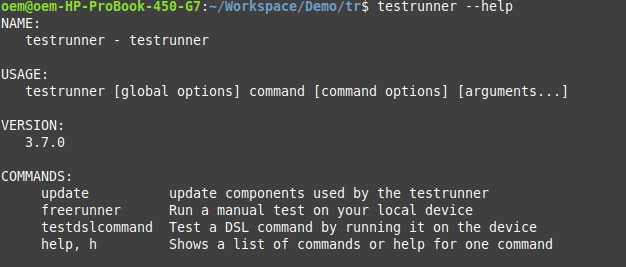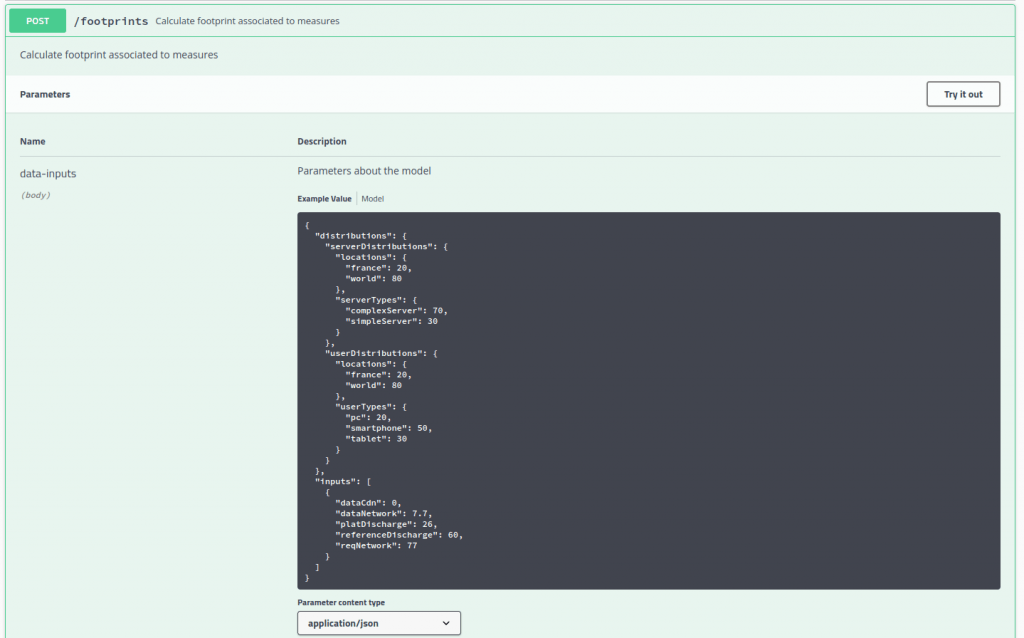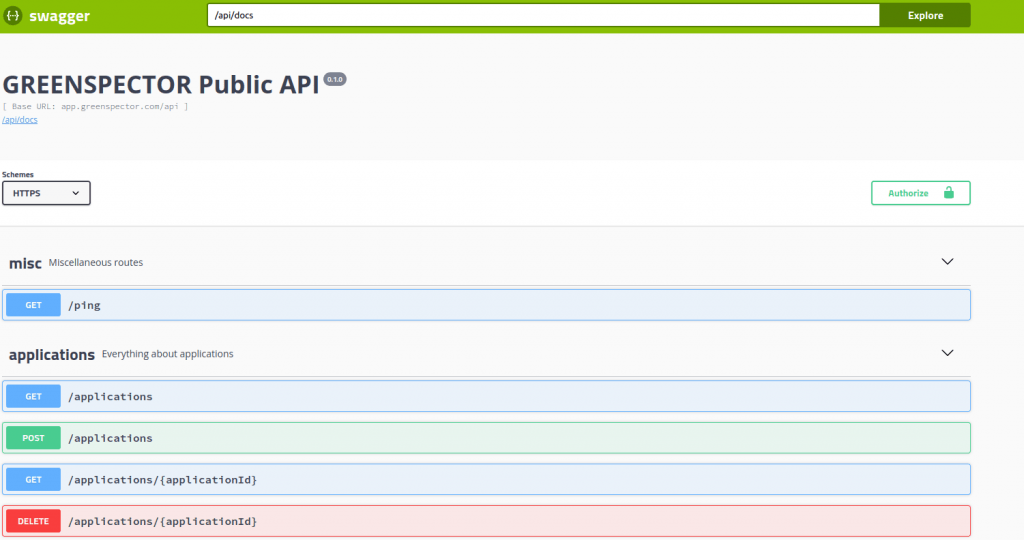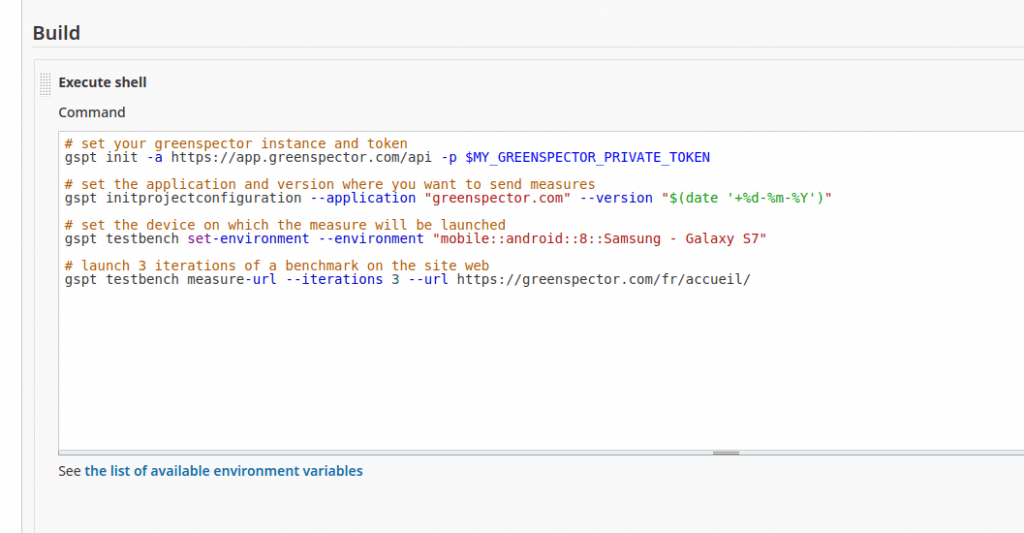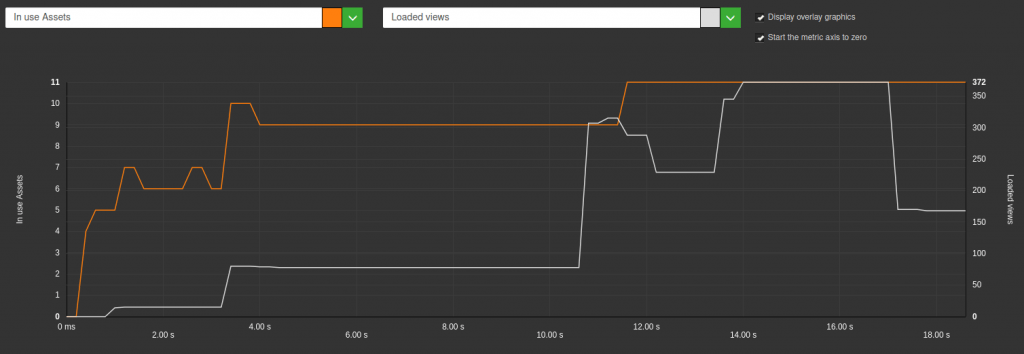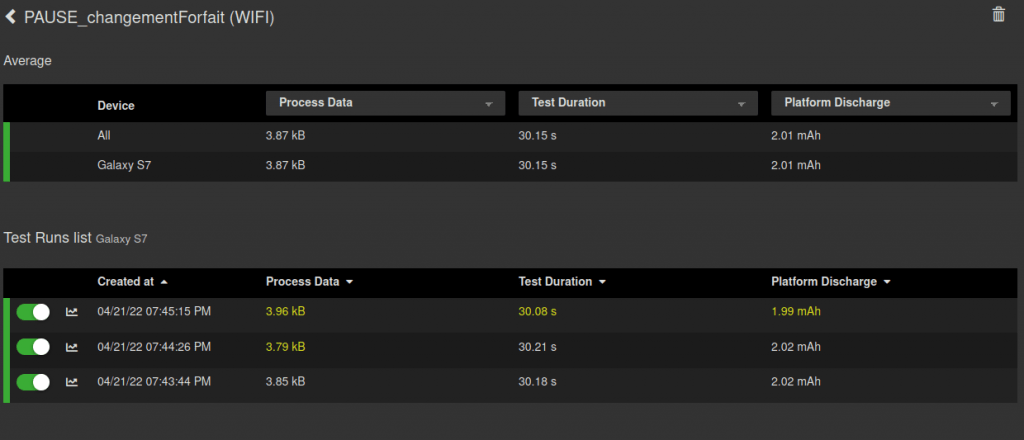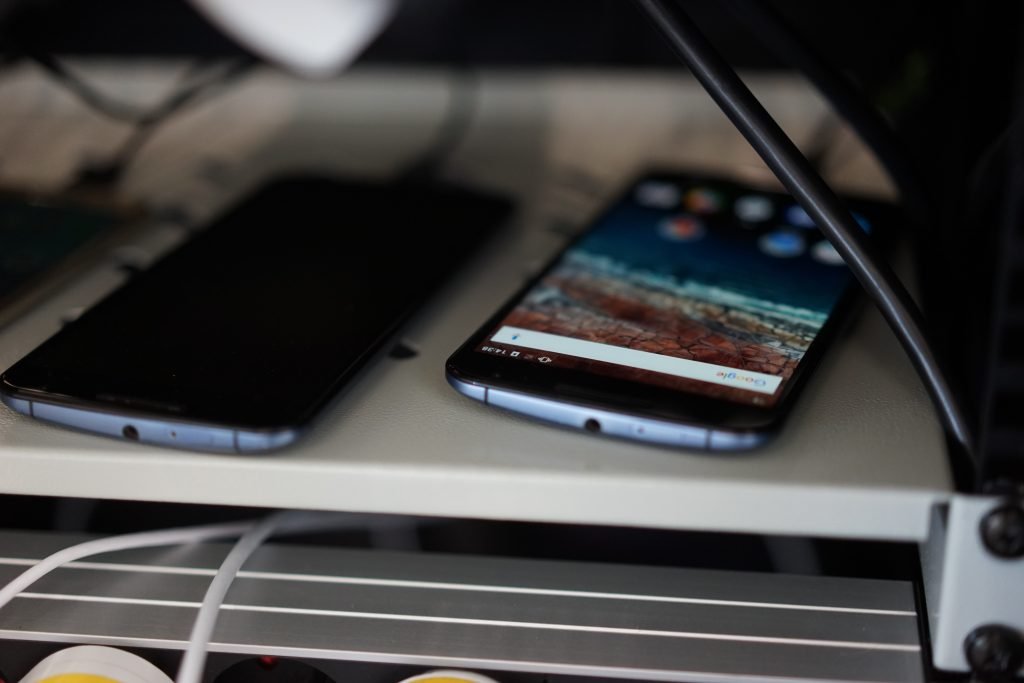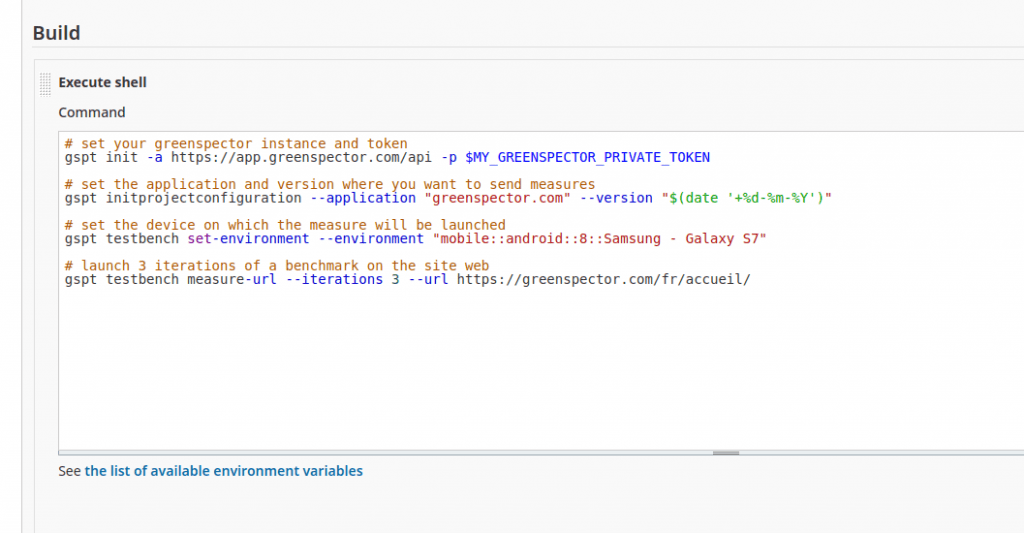Description of the features of Greenspector Enterprise Solutions
Features of Greenspector Studio
Our solution can be integrated into your design processes to manage energy and resource indicators in a continuous integration process.
Define and automate user paths via a dedicated language, the GDSL. Offer your teams a complete tool dedicated to sobriety and performance improvement of your digital services.

Benchmark Application
Evaluate in 1 click the performance and environmental impact of your Android application or website. No need to automate or instrument your applications.
See the details

Functional pathway
The user’s path is realized on real devices and in a controlled environment. This path is written in GDSL language.
See the details

Environmental impact analysis
Assess the environmental impact of your software solutions. Identify the most impactful phases via a simplified LCA (Life Cycle Assessment) with carbon, water and surface impact metrics.
See the details
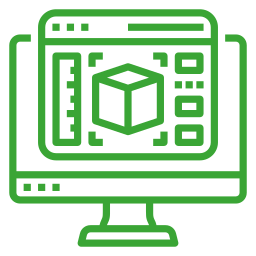
CI/CD Integration
Integrate Greenspector’s testing and measurement capabilities into your software factory. This allows you to integrate quality assurance on the environmental impact of your software from the development stage.
See the details

Synthetic Environmental Impact Monitoring
Track the environmental impact of your application or website by simulating your software on real hardware.
See the details

Measurement workshop
Benefit from advanced tools for a detailed analysis of resource consumption.
See the details
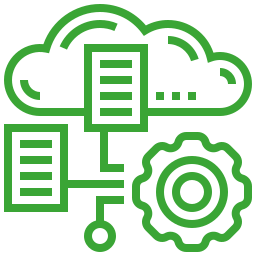
Test Cloud
Access real devices in the cloud. The controlled environment provides smartphones and tablets to test your software in stable conditions.
See the details

